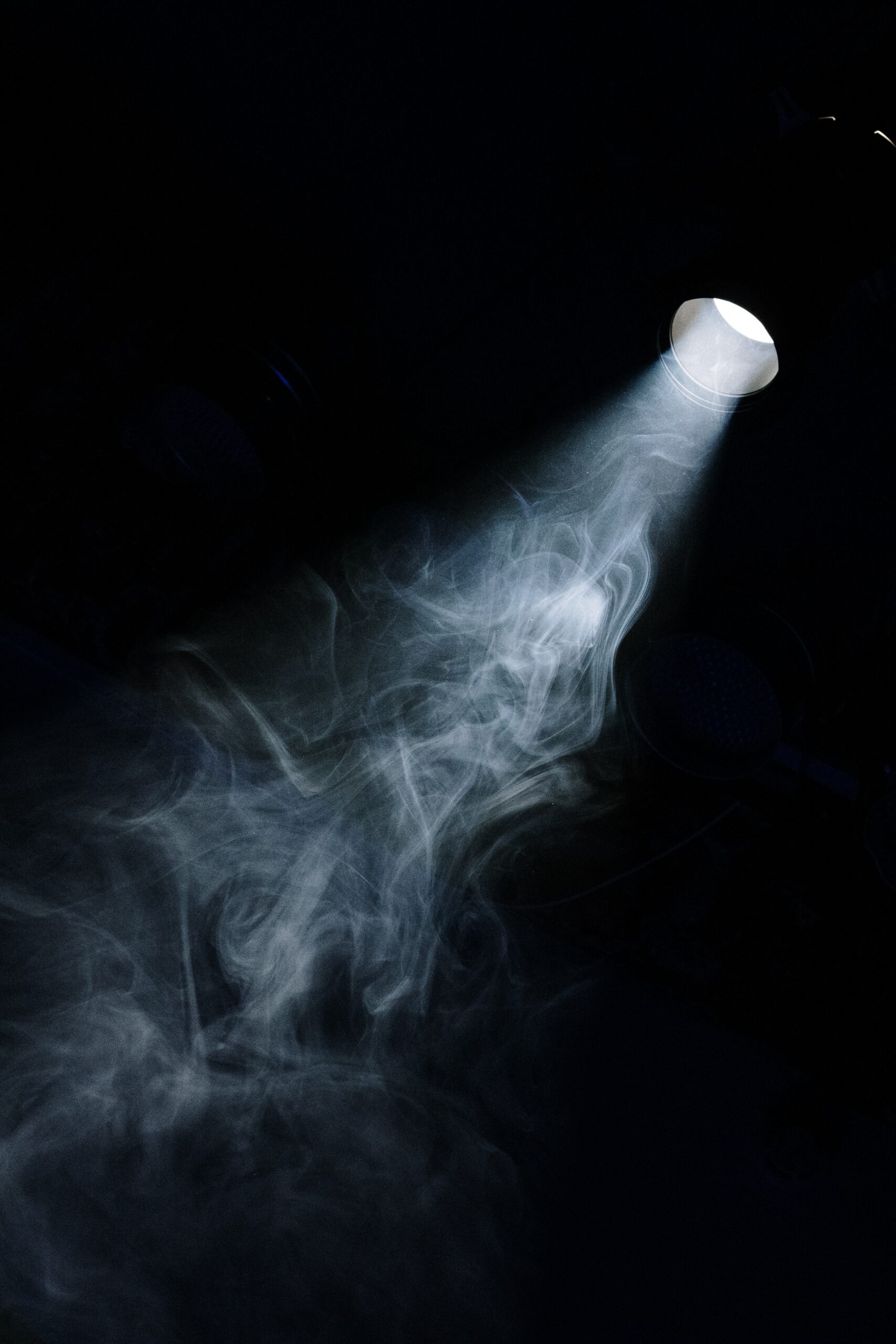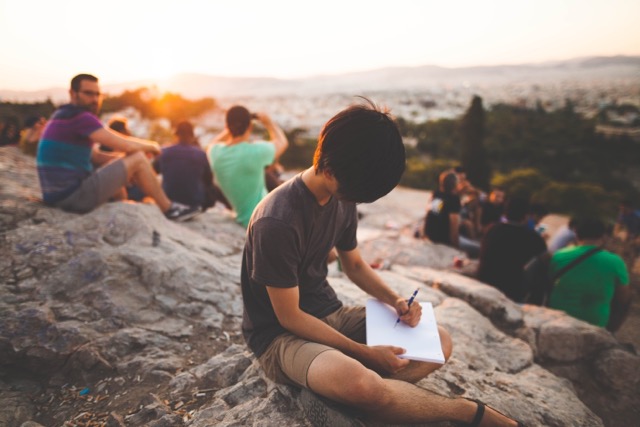“What can the act of writing give to those who are suffering?” T&W editor Susan Karwoska posed this question in our “Writing Through Trauma” issue of Teachers & Writers Magazine following the Sandy Hook Elementary School shooting in 2012. It’s been a decade since we published this issue of the magazine (then in print), but our editors are still asking the question. Whether it be the gun violence that plagues our country, a pandemic, racially motivated violence, or news from abroad, it can feel like we are perpetually processing crises. As educators, you may be grappling with the task of absorbing, making sense of, and synthesizing violence and oppression for your students—or, sometimes more challenging, looking for ways to simply be present with them in the face of unanswerable questions.
In her essay on poetry and artivism, the late poet and writer Kamilah Aisha Moon writes, “The act of creation is the healthiest and most effective response we have to destruction.” At T&W, we believe writing not only has the power to heal but also to enact positive change in the world. For this reason, we have compiled resources from our magazine, including our archival “Writing Through Trauma” issue, that address teaching creative writing in times of crisis. We have also selected a few poems that we have found helpful to meditate on during these times. We hope the resources in this list can help provide a framework for conversation and creative, generative change in your classroom and beyond.
Lesson Plans & Other Resources from the Magazine
“What They Bring to the Room: A Visit to T&W’s Anti-Gun Violence Residency” by Cynthia Amoah
Cynthia Amoah reflects on T&W’s Anti-Gun Violence Residency and how teaching artists and students can work together to understand and prioritize students’ needs and feelings in response to violence.
“You Are Who We Love: A Lesson Plan for Collaborative Poems Inspired by Aracelis Girmay” by Matthew Burgess
Matthew Burgess uses Aracelis Girmay’s poem “You Are Who We Love” as a model for collaborative writing between teachers and students exploring what they love.
“What If Poems: Reckoning with History and Trauma Through Artistic Re-Envisioning” by Brittny Ray Crowell
Brittny Ray Crowell uses Eve Ewing’s poem “I saw Emmett Till this week at the grocery store” as a model for students to write poetry that re-envisions history, trauma, racialized violence, and the future.
“Teaching about Racism: Toward a Shared History and Common Language” by Alex Cuff
Alex Cuff shares her experiences teaching the historical background and context of institutional racism in response to racialized violence.
“A Home in the Classroom: Mandy Manning on Community, Love, and Building a Refuge in Her Classroom” by Wynne Kontos
This interview with 2018 National Teacher of the Year Mandy Manning explores her experiences working with refugee and immigrant students and the importance of culturally responsive mentorship in the classroom.
“When All Is Not Sugar and Spice: Helping Kids Explore Sadness” by Caron Levis
Caron Levis shares how her picture book, Stuck with the Blooz, helped students begin to understand and work through their complex grief, sadness, and emotion in the wake of the Sandy Hook Elementary School shooting.
“Dear America: Encouraging Students to Push Back Against Culturally Accepted Norms” by Matt Malyon
Matt Malyon uses a Langston Hughes poem as a model for incarcerated students to express their feelings toward our country and carceral system.
“Common, Everyday Injustices: Using Claudia Rankine’s Citizen to Prompt Writing about Prejudice” by Phyllis Meshulam
Phyllis Meshulam uses Claudia Rankine’s Citizen: An American Lyric to explore experiences of racism and prejudice with her students.
“Valves, Salves, and Blueprints: Poetry and Artivism” by Kamilah Aisha Moon
Kamilah Aisha Moon writes about artivism and writing a powerful, political, loving, and courageous act.
“I Find It Hard To Say: Creating Space for Young People to Feel and Reflect” by Robyne Walker Murphy
Robyne Walker Murphy uses poetry, music, and visual art to help students think critically about the world in times of racial and oppressive injustices.
“The Clouds of War: Gulf War Poems” by Students at PS 16
Collected during the 1990-91 school year, teaching artist Jeffrey Pflaum shares student poems written in response to the Gulf War.
“The Writer as Activist: What is the role of the artist/writer in moments of injustice and social unrest?” by T&W
In this collective article, teachers and artists share their responses to this question: What is the role of the artist/writer in the current #BlackLivesMatter movement and in moments of injustice and social unrest?
Teachers & Writers Magazine: “Writing Through Trauma,” Volume 44, Issue 3
- “Writing through Trauma: Introduction” by Susan Karwoska
- “Holding On, Letting Go, Making Use: Writing as Remembering” by Peter Markus
- “Setting Right What Is Wrong: Mending with Words in a Pediatric Cancer Ward” by Marcia Chamberlain
- “The Story We Tell Ourselves Afterward: At the Veterans Writing Workshop” by David Surface
- “Nurturing Trauma: At a Teen Writing Workshop after the Earthquake in Haiti” by Ibi Zoboi
- “Inside a Person’s Heart: Finding Solace from Stories and Poems” by Merna Ann Hecht
- “Object Lesson: Writing in the Wake of September 11” by Matthew Sharpe
- “On the Page Where Anything is Possible: Writing with Children in Hospice” by John Rybicki
- “Reaching for Others: Writing New Year’s Wishes to Newtown Students” by Autumn Hayes
Poems
“Still I Rise” by Maya Angelou
“How to Write a Poem in a Time of War” by Joy Harjo
“Mimesis” by Fady Joudah
“We Lived Happily During the War” by Ilya Kaminsky
“No Art” by Ben Lerner
“Keeping Quiet” by Pablo Neruda
“Blood” by Naomi Shihab Nye
“You, If No One Else” by Tino Villanueva
Poems of Protest, Resistance, and Empowerment: a selection of poems from the Poetry Foundation
Teachers & Writers Magazine is published by Teachers & Writers Collaborative as a resource for teaching the art of writing to people of all ages. The online magazine presents a wide range of ideas and approaches, as well as lively explorations of T&W’s mission to celebrate the imagination and create greater equity in and through the literary arts.



